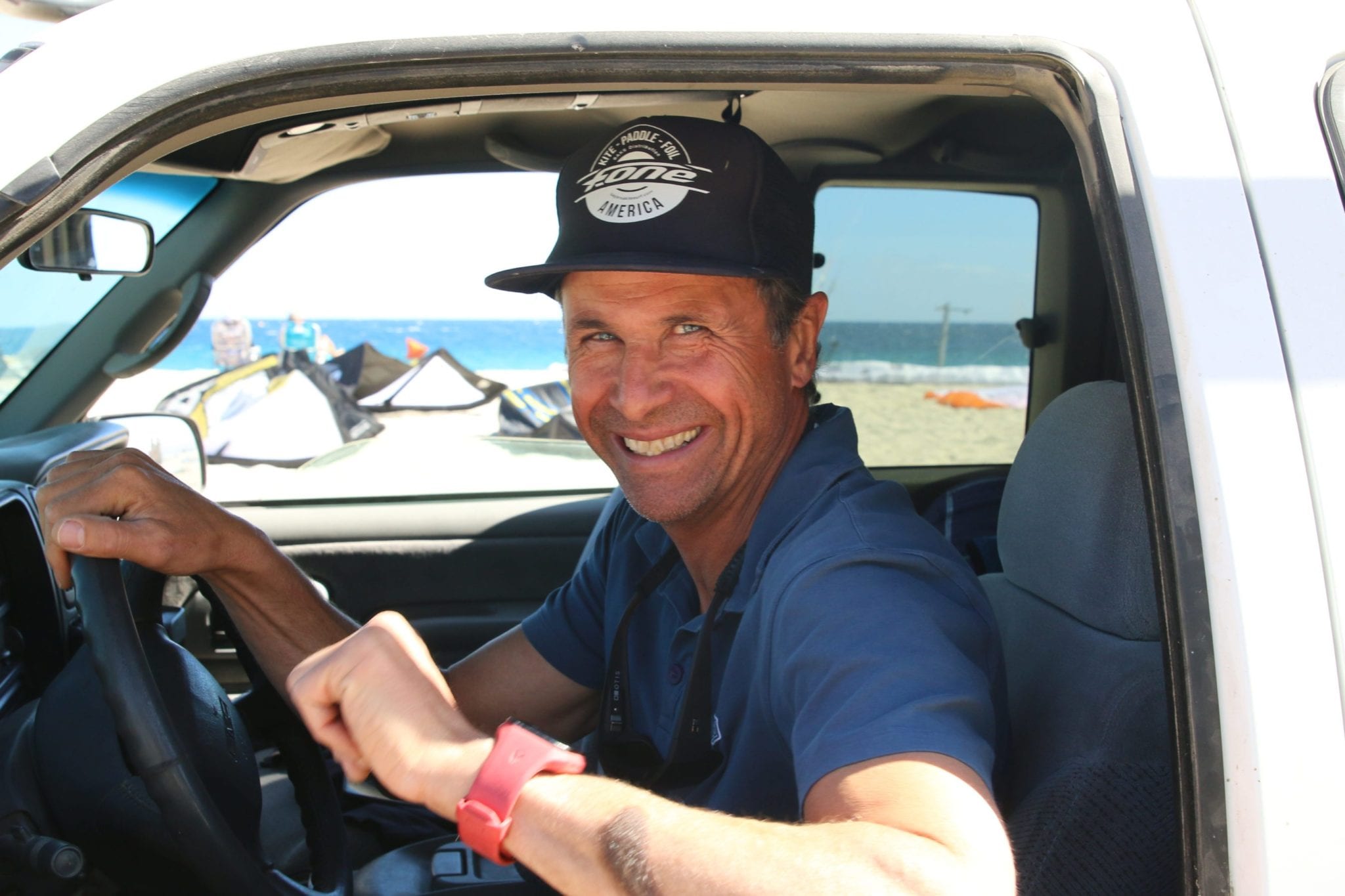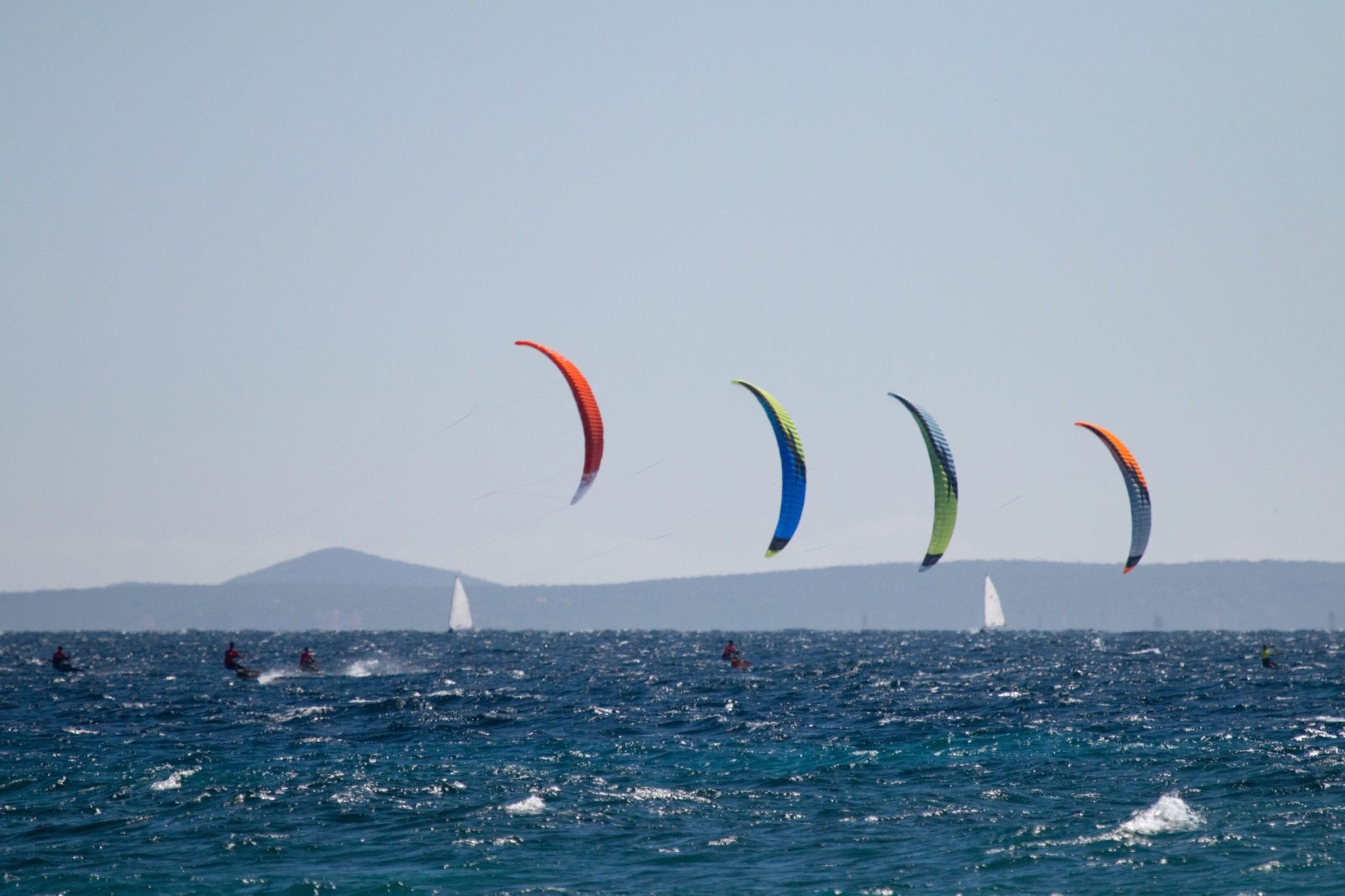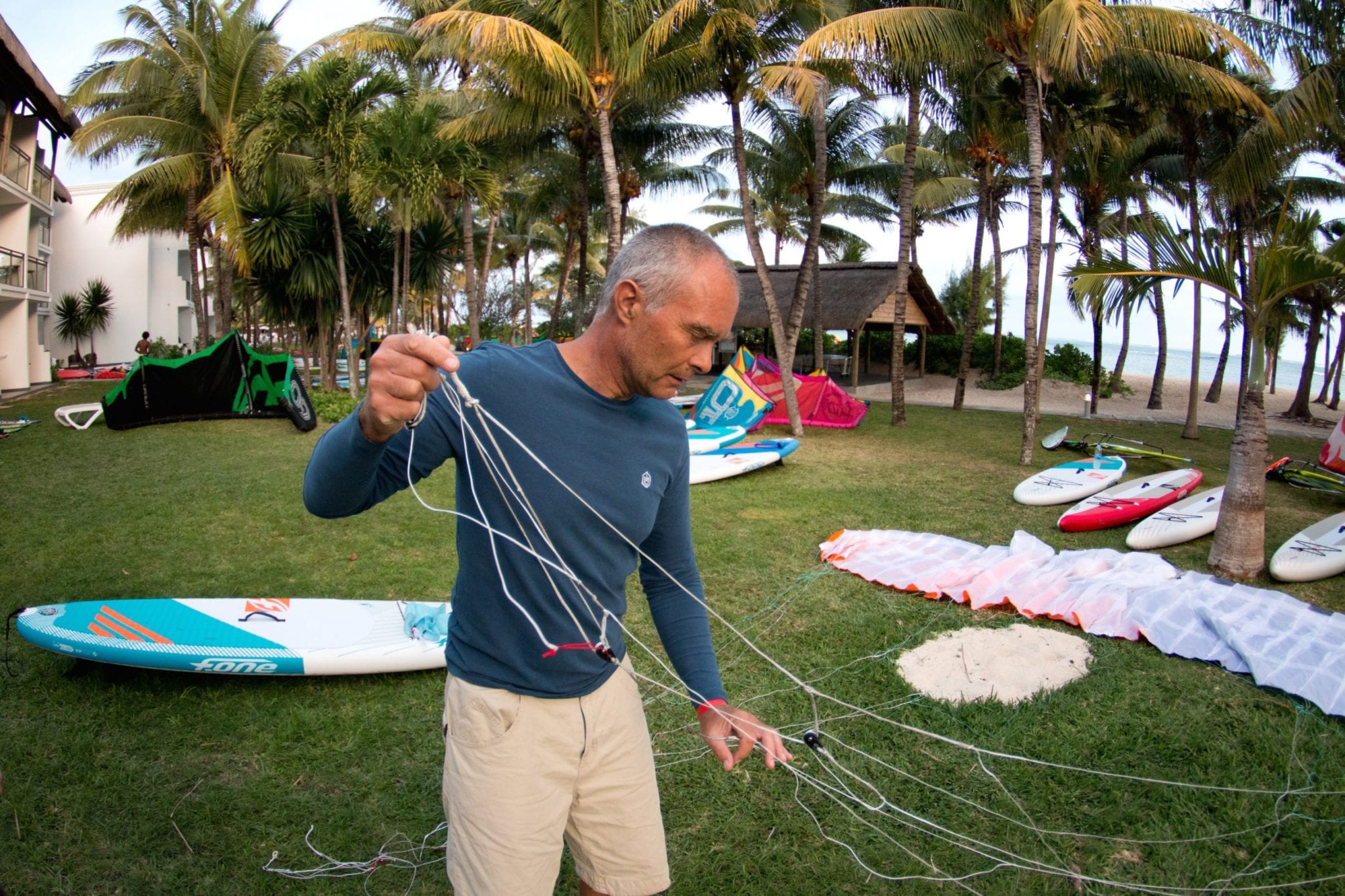
Bruce Johnson pulls up to the beach and can’t stop smiling when he sees his team leading the pack.
Bruce Johnson presses send on his cell phone and a text full of celebratory expletives travels through a tower and across the border to business partner Nico Ostermann who’s sitting in a warehouse somewhere back in the United States. Bruce has been beaming all week long; it’s not because he’s sitting on a sunlit beach in Baja while Northern California is getting pounded with torrential downpour, but rather because it’s hard not to smile when you’re standing there, watching as your racing team dominates every square inch of the race course.
Bruce and partner Nico are the faces of F-One’s US distribution and while F-One has been doing very well with its flagship do-it-all leading edge inflatable Bandit kite, the newly designed Diablo ram air racing kite has become an all or none proposition on the foilboard racing circuit. It’s fairly obvious that the Diablo is a breakout product”” even the tourists watching from the stands at both Baja’s La Ventana Classic and Los Barriles’ Lord of the Wind can’t help but wonder why the top five competitors are all on similarly colored kites with the same giant F-One logo.

Racers on the upwind tack demonstrate that competitors naturally gravitate to the designs that deliver the best performance.
On the water, San Francisco’s Joey Pasquali is one of the top competitors and is quick to point out, “Most of us who are dedicated to racing can’t turn our backs on something that gives you an edge, that extra five to ten percent that will allow you to go out there and win.” After riding an early Diablo prototype, Joey was one of the first riders to switch to F-One. According to him, “This kind of performance edge makes guys willing to take that step and trade gear to whatever works best.”
In contrast, when you read reviews or ask for feedback on general-use kites, like surf or freestyle, there’s an incredible amount of subjectivity in play ”” and for good reason. Jumping height, turning speed and bar pressure all change from minute to minute and are interpreted differently across the various sizes and skill levels of riders. One man’s “uninspiring dog” is another man’s “money kite,” but on the race course, equipment is judged in the black and white sphere of performance. There’s nothing subjective about the crossing order at the finish line. While the definitive nature of racing’s bench test is great for athletes, one can only imagine how challenging that can be for the manufacturers. This week your product is trending in first or second place and next week you’re in last. As a result, many of the companies that were once in the racing space have long since ducked out.
What’s even more strange is that F-One, which has been mindfully focused on delivering one all around kite product that meets the generalist needs of all types of kiting, has now drastically switched directions and poured its creative efforts into one of the narrowest product segments of kiting. In order to understand this organizational shift, you need to meet F-One’s head of kite design, Robert Graham.

R&D doesn’t stop even when you’re on top. Back in Mauritius, Robert Graham works his way through an intricate bridle.
A few years ago, Robert was hired by F-One’s owner, Rafael Salles, to oversee the kite design of the Bandit. Robert had learned the basics of design while building boat sails before transitioning into windsurfing sails and eventually began tinkering with paragliding construction. In the years that followed, Robert scored a paragliding World Championship title and logged 10 years as a designer at Gin Paragliders, one of Europe’s leading paragliding companies. While Rafael didn’t hire Robert for the purpose of building foil kites, it was Robert’s familiarity and connections with Gin that ultimately led F-One to partner with Gin’s owner, Gin Seok Song, to begin building a ram-air for kiteboarding.
Rafael Salles admits that when he hired Robert, “I could not imagine that we would be doing a ram-air kite one day. But since F-One is dedicated to the foilboarding segment and we want to control all the elements of the discipline: foil, board and kite, this allows us to create a full equipment package that is in tune and works well together.”
When asked how he felt about entering the arms race of foil racing, Rafael is quick to point out that the Diablo is also an excellent light wind kite that will appeal to the average kiteboarder. According to Rafael, “The Diablo is made for winning races, but you will also be surprised how stable and easy it is to use. If you are a freerider, but you like to ride your foilboard in ultra-light wind, then the ram-air is a good option.”
Even if the broader market is slow to adopt the light wind performance of the Diablo, Rafael justifies his entrance into the realm of racing because his winning team demonstrates F-One’s competencies. “It’s like Formula One car racing ”” you don’t sell those cars, but they show everyone what you are able to develop.” When you ask Joey what sets the Diablo apart from other ram-air kites on the market, he will tell you, hands down, “the power that they are able to produce with the smaller size canopy makes the Diablo extremely efficient, and the downwind angle [that you can travel] is far superior to anything out there right now.” Joey notes that many people seem to think race kites are scary and hard to fly, but in reality, “They are super stable and work insanely well in light air and they’re great for jumping ”” just watch one of the big air contests.”
When asked about competing brands, Joey speculates, “As we speak, the other design teams out there are probably testing their prototypes against a set of Diablos. With any luck, the other brands will come back strong because we need more companies to make racing a success.” For the moment, Joey believes F-One is doing a great job. “They know they have something good, so they are making small adjustments, not reinventing the wheel,” and he’s happy with that approach.
Back at F-One’s US headquarters, Bruce and Nico are feeling the desired challenges of being on the positive side of the supply/demand curve. According to Bruce, “The factory has been pretty dialed on meeting demand, even in the 11m which is becoming one of the most popular sizes.” A lot of the traditional LEI kiters who have resisted ram-airs in the past are coming onboard and buying the kite without even flying it. Because he’s not racing anymore, Bruce identifies with these guys, but swears the Diablo, on a foilboard in 8-12 knots, is the most insane sensation. “The attraction has nothing to do with racing ”” it has everything to do with feeling.”
This article was featured in Tkb’s spring 2016 issue. Want more like this? Subscribe here: https://www.thekiteboarder.com/product/magazine-subscription/


